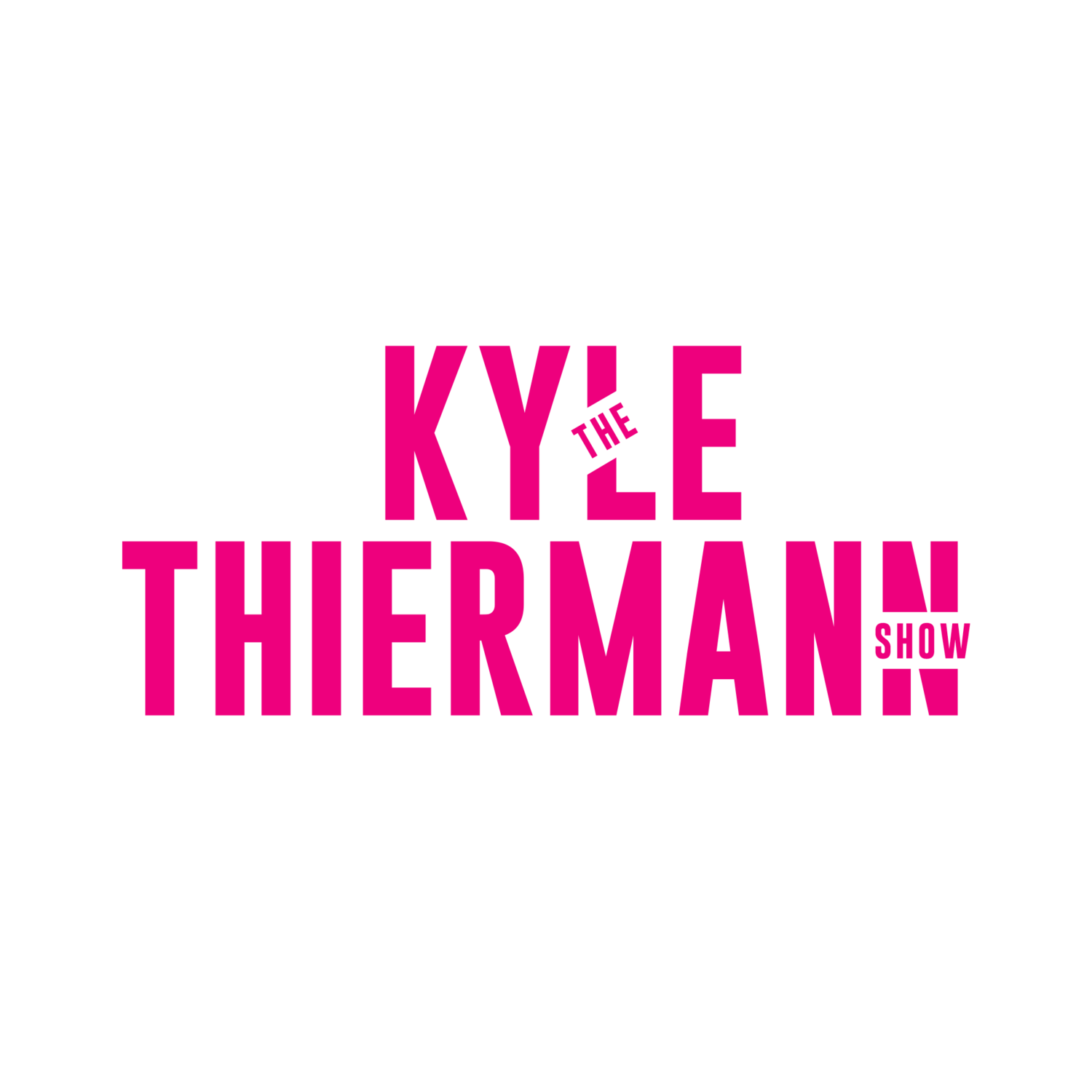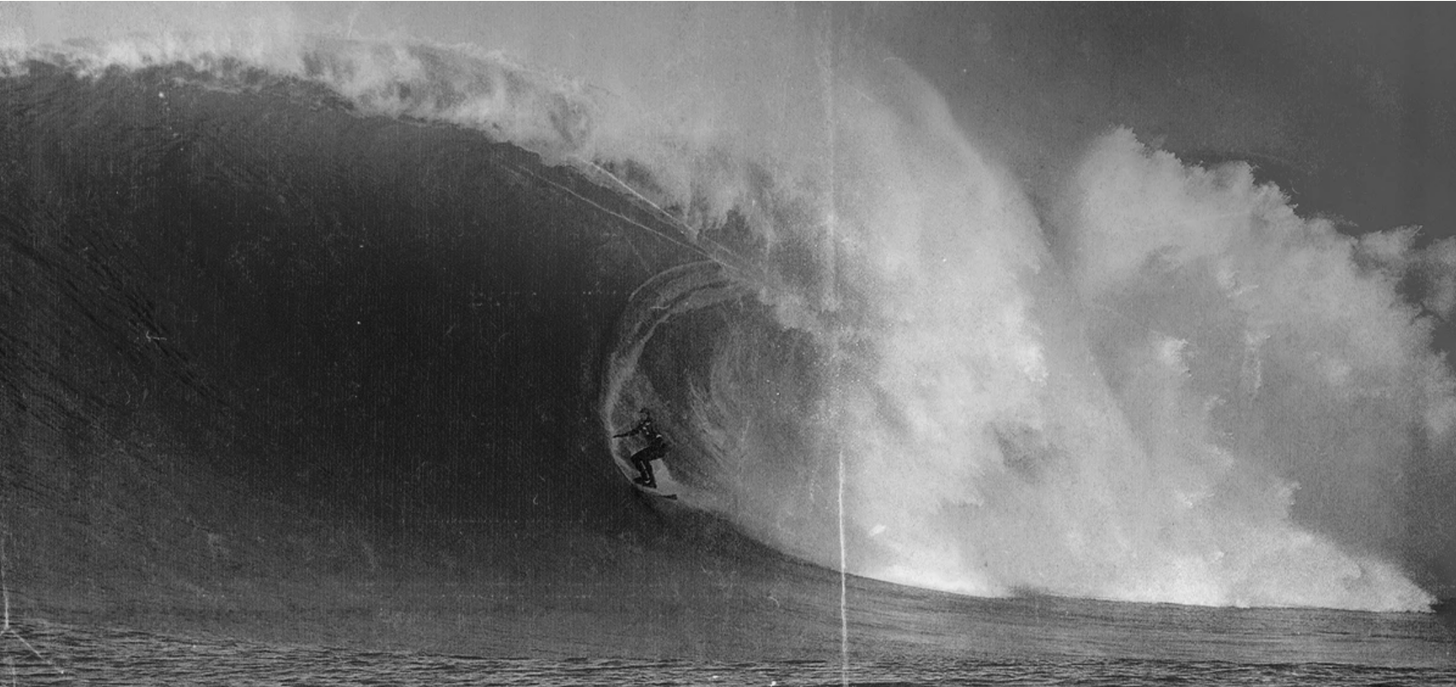The Peter Mel Profile
When the wave came, at around 3 p.m. on Jan. 8, 2021, Peter Mel paddled from behind the peak and knifed into the bowl. Once he’d made the drop and set his line, he didn’t crouch in a survival stance or open his mouth in a “holy shit!” expression. He just stood casually inside a 50-foot barrel as if he were in a cathedral, having a private chat with God. Deep in the tube, he shrugged. And when the wave spit him out safely into the channel, he bowed his head and then looked up and smiled at his son John Mel, who watched in disbelief from a jet ski.
It was the best wave anyone has ever paddled into at Mavericks, the famous big-wave break 20 miles south of San Francisco. Peter has been surfing the spot for 29 years, and on the day he caught the best wave of his life he was 51 years old.
The first surf poster I ever tacked to my wall, when I was maybe 10 years old, was of Peter Mel dropping into a wave at Mavericks. The poster read The Men Who Ride Mountains in bold letters, and in black sharpie below were the words To Kyle, Go Big. Peter Mel. I kept that poster through my teens, when I became friends with his stepson Anthony, and it was still on my wall when he publicly revealed his addiction to meth.
A few days after Peter’s historic ride at Mavericks, I walk into Freeline Surf Shop in Santa Cruz and Peter is behind the register autographing a magazine for a customer. The shop has been in his family since Peter’s dad opened it in 1969. Business is good these days, and it only gets better when Peter makes himself available for customers. I only came in for a bar of wax, but now that I’m chopping it up with a surf legend, maybe I do need a new surfboard after all. The shop is still a family operation. Peter’s wife Tara Mel, son John, and stepson Anthony are all working there today.
Even though I’m a longtime friend of the Mels, I’ve come this time as a journalist, eager to profile Peter and flesh out the truths and details behind some dark family stories that I only sort of know about. The family is candid with me, and I feel both honored by their trust and terrified by the responsibility.
I interview Tara across the street from Freeline on a wooden bench. The street is busy with tourists on their way to the beach. Tara has blue eyes and is wearing ripped jeans and a baby blue cashmere sweater patterned with dandelion flowers.
“When did you and Peter meet?”
“I was 22 and I walked into Freeline to buy a wetsuit for my son, Anthony, who was 1 year old,” she says.
“Do you remember anything about that first interaction?”
“Yeah. He made sure to let me know that he was a professional surfer.”
Tara was a single mom and had to pay for the wetsuit in $20 increments, so she kept returning to the shop. Not long after, they started dating casually, and when Anthony was old enough to form words he started calling Peter “Dad.”
“I tried to tell Anthony, ‘no, that’s Peter,’” Tara says. “Then one day Peter looked at me and said, ‘It’s OK, he can call me Dad.’ From that moment on I was like—this guy’s got me.”
Six years later, Tara gave birth to John.
In the late ’90s and early 2000s, surfing was moving to the high-octane pace of punk bands like Pennywise and Offspring. The industry was booming, and pro surfers, many of whom were from broken homes, were stacking more cash than their parents. Brands glorified their athletes getting fucked up, and when Santa Cruz pro Darryl “Flea” Virostko won the Mavericks contest he famously threw a rager at the Dream Inn, then spent a hefty chunk of his prize money on hotel repairs. My signed poster seemed to be a prophetic slogan of the times. Everyone was trying to Go Big.
The first time Peter smoked meth was at the Red Bull 5x surf contest in Puerto Escondido, Mexico.
It was 2003 and he was at the contest with Flea, who was the highest-paid surfer in Santa Cruz at the time and Peter’s big-wave rival. Flea had won three Maverick’s contests in a row and Peter had won none. They smoked meth together on that trip, then Peter won the Red Bull 5x and convinced himself that he surfed better on meth. At the time he was overweight from drinking. The meth slimmed him up, kept him psyched, and made him fearless in big waves. It wasn’t long before Peter and Flea became addicted.
I interview Peter in an alleyway behind the surf shop where we won’t be interrupted. The brick wall is blue and sprayed with a mural of Peter riding a wave. Two jet skis are hitched to Peter’s van, ready to go for the next swell. Peter leans against one of the skis as we talk.
“What’s it like surfing Mavericks on meth?” I ask.
“No hesitation,” he says.
Peter doesn’t fit the description of a stereotypical surf bum, with slouched shoulders and the enunciation of a warped record. He is a tall, slightly intimidating figure who stands with his shoulders back and wields language with the clarity of a sports broadcaster—a skill that has paid dividends. Because of his composure, Peter was able to hide his addiction for more than two years before he began to slip. It was Anthony, then a teenager, who found a jar of the stuff hidden beneath a pile of wetsuits.
“It was a glass jar with duct tape around it,” Anthony tells me. “I brought it over to my friend’s house and he was like, ‘Put that back exactly where you found it, and don’t tell anyone.’”
Anthony carefully replaced the jar and held the secret. Peter first came out to his close friend and Quiksilver team manager Strider Wasilewski. “I’m fucked up, dude,” he told Wasilewski over the phone while driving to visit him in Southern California.
“I remember driving down to Strider’s house having full-on paranoid psychosis,” Peter says. “I thought there were little Indians hanging onto the outside of my car and shit.”
One night, with his head buried in his hands, he had a reckoning with Tara, who already suspected that he was on drugs. He admitted himself into a program called The Camp to get sober. He would relapse three times before finally sticking to sobriety.
As I said, when I was a teenager, Peter’s stepson Anthony and I were friends. A group of us would hang out at a beach house, surfing and chasing girls. Somewhere along the way, Anthony and the crew started smoking mole hits, a combination of tobacco and weed that is inhaled through a bong. Early morning surfs were replaced with late-night partying. Curious eyes faded to vacant stares. This scared me, and our crew broke apart.
Anthony soon found heroin, and his life spiraled.
Anthony is working behind the register at Freeline during my visit, and when he has a moment I ask to interview him as well. We hustle across the street, dodging traffic, and sit on the same wooden bench where his mom and I had spoken. We haven’t had a real conversation in years.
“What did heroin give you?” I ask.
There’s a quiet moment between us while he thinks. Anthony was the youngest in our group and often bullied. I remember how the older kids would pin him down and wail on him. Anthony would beg them to stop, then run home crying.
“Heroin made me feel comfortable,” he says.
“What helps addicts get through rehab?”
“Family. It’s hard no matter what, but odds are with you if you have family.”
Anthony pauses again. He has straight teeth from the braces that he wore all those years ago, and he has Tara’s sandy blond hair. He wears a black hat and black sweatshirt, and gazes into the distance.
“I know Pete feels guilty, but he came into my life like a superhero,” he says. “I wish I could tell him that it’s not his fault, you know.”
Once Peter got clean, Quiksilver approached him with the opportunity to manage their Waterman’s Collection, a line of surfwear tailored to middle-aged surfers. In 2010, Peter and his family moved to Southern California, and he took his first 9-to-5 job.
“I needed to get out of Santa Cruz and cut ties with my old crew,” Peter says. “I didn’t want to let Tara and my kids down.”
Surf culture in Southern California is more structured than in Santa Cruz. Youngsters are groomed into competitive machines. John flourished in the new environment. With Peter in his corner, John went on to win five prestigious titles as an amateur.
Quiksilver started using Peter as a commentator for their surf events. He had a knack for on-camera delivery, which caught the attention of The World Surf League. The WSL hired him to commentate their main events, and soon he was traveling to the world’s premier waves, interviewing champions like Kelly Slater and John John Florence after their heats.
Peter continued to be a standout at Mavericks, and in 2013 he finally won the contest—sober. Peter’s longtime rival Flea is also now clean and runs a surf-focused rehab center called FleaHab.
“Flea and I are still cordial,” Peter says, “but we don’t really hang out anymore. It was just a chapter in my life that needed to close.”
Soon after winning the contest, Peter and his family moved back to Santa Cruz. Not long after, John started surfing Mavericks. This worried Tara because of the drug culture associated with Santa Cruz big-wave surfers.
“Mom definitely had a few conversations with me about it,” John says. “But I’m not into that stuff. Big waves just make me want to focus on training and breathing techniques.”
This winter, massive swells and favorable local winds have manifested in the best year at Mavericks in the 29 years Peter has been out there. Peter and John work as a team and run safety for each other in the channel. Anthony often watches from a jet ski. Peter feeds off his boys’ energy, and, on the most terrifying days, in a crowd of athletes often half his age, Peter has bagged the wave of the day on nearly every swell this season—cementing his legacy as the greatest Mavericks surfer of all time.
In the moments following his historic wave on Jan. 8, Peter glided into the channel, sat down on his board, crossed his arms, and bowed his head. With a crowd cheering from nearby boats Peter just sat there, looking down at the water.
“What was going through your mind?” I ask.
“It was like my whole life flashed before my eyes,” he says.
He smiled at John, hugged a friend, and paddled over to the jet ski to text Tara. “I just caught the best wave of my life,” he wrote.
As Peter recounts the story to me in the alleyway behind Freeline, backdropped by a mural of himself and a business built on his celebrity, his eyes flash toward the shop. The same shop Tara walked into all those years ago to buy a wetsuit for Anthony. Then, his broadcaster tone softens.
“She’s the one who stayed through it all,” he says. “It would have been a whole different story without her.”

